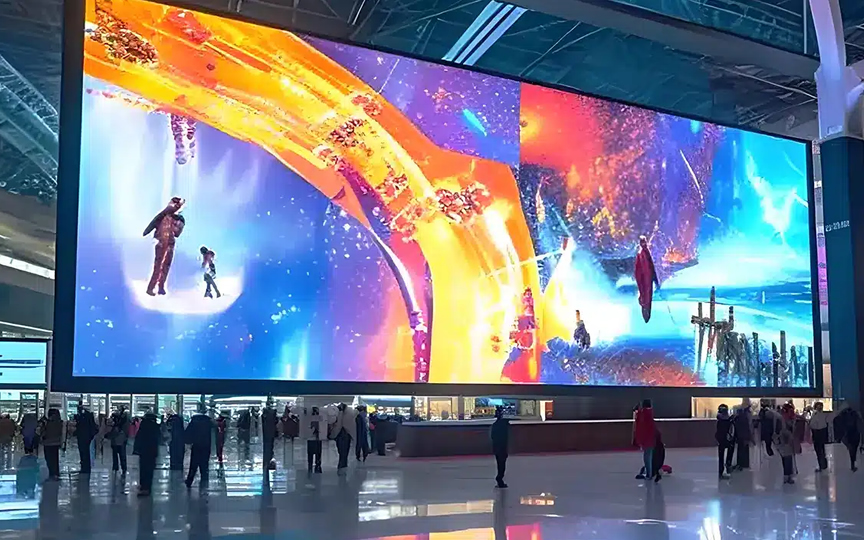Choosing the right pixel pitch is one of the most critical decisions when selecting an LED Display for your business or project. Pixel pitch directly impacts the display’s resolution, viewing distance, image clarity, and overall cost. Understanding how to balance these factors will ensure you get the best performance and value.

What Is Pixel Pitch?
Pixel pitch is the distance between the centers of two adjacent pixels, usually measured in millimeters (mm). It determines how densely packed the LED pixels are on the screen. A smaller pixel pitch means more pixels per square meter, resulting in higher resolution and finer image detail.
Why Pixel Pitch Matters
The pixel pitch affects several key aspects of your LED display:
Resolution and Image Quality: Smaller pixel pitch provides higher resolution, sharper images, and better text readability.
Viewing Distance: The optimal viewing distance increases as the pixel pitch grows. Displays with larger pixel pitches are better suited for long-distance viewing.
Cost: Displays with smaller pixel pitches are more expensive due to the higher number of LEDs and more complex manufacturing.
Power Consumption: Higher resolution displays may consume more power, so energy use should also be considered.
How to Determine the Right Pixel Pitch
Choosing the pixel pitch depends mainly on your intended viewing distance and application:
1. Viewing Distance
A simple rule of thumb is that the optimal viewing distance (in meters) is roughly equal to the pixel pitch (in millimeters) multiplied by 1,000. For example, a 4mm pixel pitch display is best viewed from about 4 meters or more.
Close viewing (less than 2 meters): Pixel pitch between 1.2mm and 2.5mm — ideal for indoor applications like control rooms, conference halls, and retail.
Medium distance (2 to 10 meters): Pixel pitch between 3mm and 6mm — suitable for indoor events, shopping malls, and auditoriums.
Long distance (above 10 meters): Pixel pitch from 8mm to 20mm — common for outdoor billboards, stadium screens, and road signage.
2. Indoor vs. Outdoor Applications
Indoor LED Displays require fine pixel pitches for close viewing and detailed images. Pixel pitches from 1.2mm to 4mm are typical.
Outdoor LED Displays need to be bright and visible from afar, so pixel pitches range from 6mm to 20mm or more, balancing visibility and cost.
3. Content Type and Use Case
Text-heavy or detailed content requires smaller pixel pitches for clear legibility.
Video playback and large graphics can often use larger pixel pitches without losing impact, especially outdoors.
Dynamic advertising boards outdoors prioritize brightness and size over ultra-high resolution.
Additional Considerations
Budget: Smaller pixel pitch displays cost more upfront but offer better quality.
Maintenance: Higher density LEDs may require more careful maintenance.
Power efficiency: Ensure your chosen pixel pitch suits your energy consumption goals.
Installation space: Larger pixel pitch displays can cover bigger areas affordably.
Selecting the right pixel pitch is essential to maximize the effectiveness of your LED Display. It balances resolution, viewing experience, cost, and application needs. At Topview Display, we specialize in custom LED solutions tailored to your unique environment and goals.
Contact us today to get professional guidance on choosing the perfect pixel pitch and building your ideal LED display system.

